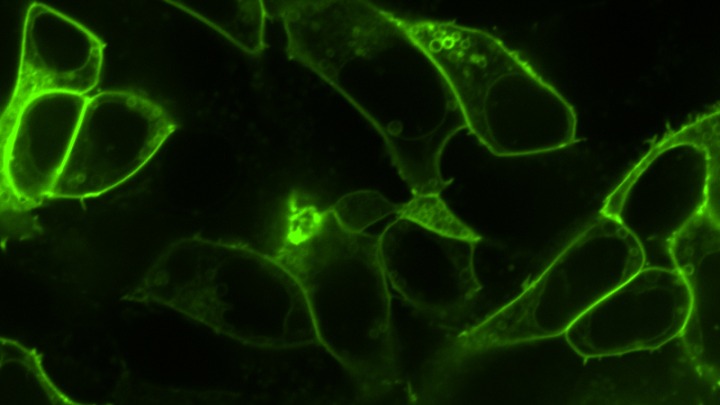
Research Highlight: New tool can “SPOT” presence of opioids in individual cells, offering clearer picture of their activity
Researchers in the lab of Wenjing Wang, Ph.D., at the U-M Life Sciences Institute have designed a new chemical tool that can detect the presence of opioids at a cellular level.
Existing tools are able to reveal general brain regions where the opioids localize, but not specific neurons. The results paint an incomplete picture of how various opioids lead to different effects on biological processes, says LSI graduate student Kayla Kroning.
“If we want to know what effects the opioids will have, we need to know which neurological pathways are being activated — which means we need to know the precise neurons where the opioids are localizing,” explains Kroning, who designed the tool with Wang. “And we currently lack the tools to understand how these opioids differ in their localization, and thus in their signaling.”
This new tool, M-SPOTIT (short for Single-chain Protein-based Opioid Transmission Indicator Tool for MOR), literally highlights individual cells that have been exposed to opioids. Using opioid-activated fluorescent sensors, the method causes cells to send out bright green signals when opioids are present.
In a study published March 4 in the journal Angewandte Chemie, Wang and Kroning provide a proof of principle showing that the tool works in cell cultures grown in Petri dishes. But they also envision several future applications for M-SPOTIT.
In collaboration with the LSI’s Center for Chemical Genomics, for example, they are investigating how the M-SPOTIT tool can aid high-throughput drug screening efforts to identify viable opioids for drug development.
“We also think it will be very useful for determining what neuronal pathways the synthetic opioids are targeting in the brain of living organisms,” says Wang, who is a faculty member at the LSI and an assistant professor of chemistry at the U-M College of Literature, Science, and the Arts.
Go to Article
“Designing a single protein‐chain reporter for opioid detection at a cellular resolution,”Angewandte Chemie International Edition. DOI: 10.1002/anie.202101262


